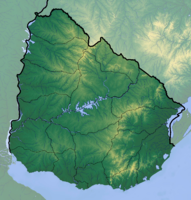
Photo from wikipedia
High-resolution lake and reservoir bathymetric surveys can pinpoint locations that may experience underwater landslides (subaquatic sedimentary mass movements). These can pose a risk to underwater and shoreline infrastructure. This paper… Click to show full abstract
High-resolution lake and reservoir bathymetric surveys can pinpoint locations that may experience underwater landslides (subaquatic sedimentary mass movements). These can pose a risk to underwater and shoreline infrastructure. This paper outlines an approach for using spatial variation in sedimentary patterns to identify areas susceptible to subaquatic mass movements in lakes and reservoirs. This study focusses on Lake Biel (Switzerland), which has experienced a protracted history of upstream alteration of river flow. Altered flow patterns increase risk of unstable sedimentary features and subaquatic mass movements. Data from sediment traps and cores, Acoustic Doppler Current Profilers and results from a 3D hydrodynamic model gave a consistent picture of spatial and temporal variation in weather-related sedimentation. Erosion caused by short-term rain events contributes the largest proportion of sediments to the lake. Strong rain events combine with typical wind patterns to drive lake circulation. The net effect results in preferential sedimentation onto a steeply sloping shelf prone to subaquatic slides. The integrated approach outlined here incorporates short- and long-term sediment dynamics to provide a systematic assessment of lake sedimentation and potential mass movement hazards. This research represents a first step in developing a risk-evaluation tool for aquatic hazard evaluation.
Journal Title: Water Resources Management
Year Published: 2020
Link to full text (if available)
Share on Social Media: Sign Up to like & get
recommendations!